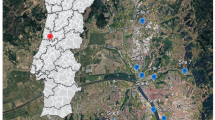Abstract
The study aims to compare the differences of macrofauna communities of wetlands at 3-year-forestage, 5-year-forest-age Sonneratia apetala artificial mangroves, 5-year-forest-age Kandelia candel artificial mangroves with the same restoration background, and the naked tidal flat in the Qi’ao Island Mangrove Nature Reserve of Zhuhai, Guangdong Province. The results show that there were significant structural differences in macrofauna communities among four kinds of habitats. The increase of biomass and species diversity of macrofauna at 3-year-forest-age S. apetala artificial mangroves was obviously faster than that at 5-year-forest-age K. candel artificial mangroves whose average tree height was close to that of 3-year-forest-age S. apetala artificial mangroves. The BIOENV analysis shows that it was related to the rapid growth of S. apetala, which rapidly changed the light level and shading conditions in the forests. The 5-year-forest-age S. apetala artificial mangroves had lower macrofauna species diversity but higher density and biomass than K. candel artificial mangroves with the same forest age. This was due to the rapid changes of physical and chemical properties of habitat soil by the ecological restoration of S. apetala artificial mangroves as well as the changed food sources possibly caused by the leaf-litter of such non-indigenous mangrove species S. apetala. However, further survey should be conducted on whether there are any negative ecological impacts of large-scale cultivation of S. apetala on macrofauna communities, so as to evaluate correctly S. apetala’s role in the restoration of coastal mangrove ecosystems.
Similar content being viewed by others
References
Boswell C C, Espie P R. 1998. Uptake of moisture and nutrients by Hieracium pilosella and effects on soil in a dry sub-humid grassland. New Zealand Journal of Agricultural Research, 41(2): 251–261
Cantera K J, Thomassin B A. 1999. Arnaud PM. Faunal zonation and assemblages in the Pacific Colombian artificial mangroves. Hydrobiologia, 413(1): 17–33
Chen Guangcheng, Ye Yong, Lu Changyi. 2008. Effect of Kandelia candel mangrove rehabilitation on macro-benthic fauna in Jiulongjiang River Estuary. Journal of Xiamen University (Natural Science) (in Chinese), 47(2): 260–264
Dahdouh-Guebas F, Verneirt M, Cannicci S, et al. 2002. An exploratory study on grapsid crab zonation in Kenyan artificial mangroves. Wetlands Ecology and Management, 10(3): 179–187
Day J W, Hall C A S, Kemp W M, et al. 1989. Estuarine Ecology. New York: Wiley Interscience, 339–376
Fan Hangqing, He Binyuan, Wei Shouqing. 2000. In-fluences of sand dune movement within the coastal mangrove stands on the macrobenthos in situ. Acta Ecologica Sinica (in Chinese), 20(5): 722–727
Fratini S, Cannicci S, Vannini M. 2001. Feeding clusters and olfaction in the mangrove snail Terebralia palustris (Linnaeus) (Potamididae: Gastropoda). Journal of Experimental Marine Biology and Ecology, 261: 173–183
Gao Aigen, Chen Quanzhen, Zeng Jiangning, et al. 2005. Macrofauna community in the mangrove area of Xi men Island, Zhejiang. Journal of Marine Sciences (in Chinese), 23(2): 33–40
Guan Wei, Liao Baowen, Qiu Fengying, et al. 2009. A preliminary study on controlling the invasive species Spartina alterniflora using Sonneratia apetala. Forest Research (in Chinese), 22(4): 603–607
Han Weidong, Ling Dajiong, Li Yan, et al. 2003. The Soil Dynamic Study of Restored Sonneratia apetala Plantations. Journal of Nanjing Forestry University (in Chinese), 27(2): 49–54
Lee S Y. 1998. The ecological role of grapsid crabs in mangrove ecosystems: implications for conservation. Marine and Freshwater Research, 49: 335–343
Liao Baowen, Li Mei, Zheng Songfa, et al. 2003. Study on intraspecific and interspecific competition in exotic Species Sonneratia apetala. Forest Research (in Chinese), 16(4): 418–422
Li Rong, Ye Yong, Chen Guangcheng, et al. 2007. Effect of Aegiceras corniculata mangrove rehabilitation on macro-benthic Animals in Jiulongjiang River Estuary. Journal of Xiamen University (Natural Science) (in Chinese), 46(1): 109–114
Li Xulin, Peng Yisheng, Wan Ru, et al. 2010. Food preference of two sesarmid crabs to different mangrove leaves. Acta Ecologica Sinica (in Chinese), 30(14): 3752–3759
Nobbs M. 2003. Effects of vegetation differ among three species of fiddler crabs (Uca spp.). Journal of Experimental and Marine Biology and Ecology, 284: 41–50
Suzuki T, Nishihira M, Paphavasit N. 2002. Size structure and distribution of Ovassiminea brevicula (Gastropoda) in a Thai mangrove swamp. Wetlands Ecology and Management, 10: 265–271
Tang Yijie, Yu Shixiao. 2007. Spatial zonation of macrofauna in the Zhanjiang Mangrove Nature Reserve, Guangdong. Acta Ecologica Sinica (in Chinese), 27(5): 1703–1714
Tang Yijie, Yu Shixiao, Wu Yanyong. 2007. A Comparison of Macrofauna Communities in Different Mangrove Assemblages. Zoological Research, 28(3): 255–264
Vannini M, Cannicci S, Ruwa K. 1995. Effect of light intensity on vertical migrations of the tree crab, Sesarma leotosoma Hilgendorf (Decapoda, Grapisidae). Journal of Experimental and Marine Biology and Ecology, 185: 181–189
Wang Bosun, Liao Baowen, Wang Yongjun, et al. 2002. Mangrove forest ecosystem and its sustainable development in Shenzhen Bay (in Chinese). Beijing: Science Press, 237–244
Yang Dejian, Wang Yongliang, Ma Xiutong. 1996. Oceanic Invertebrates in North China (in Chinese). Beijing: Higher Educational Press, 503–506
Ye Yong, Weng Jing, Lu Changyi, et al. 2006. Mangrove biodiversity restoration. Acta Ecologica Sinica (in Chinese), 26(4): 1243–1250
Yuan Xingzhong, Lu Jianjian, Liu Hong. 2002. Distribution Pattern and Variation in the Functional Groups of Zoobenthos in the Changjiang Estuary. Acta Ecologica Sinica (in Chinese), 22(12): 2054–2062
Author information
Authors and Affiliations
Corresponding author
Additional information
Foundation item: The Science and Technology Project of Guangdong under contract No. 2009B030600006; National Science and Technology Support Program sub-topics under contract No. 2009BADB2B0401-02; Appropriative Researching Fund for Professors and Doctors, Guangdong University of Education under contract No. 10ARF01.
Rights and permissions
About this article
Cite this article
Tang, Y., Fang, Z., Chen, K. et al. Ecological influence of exotic plants of Sonneratia apetala on understory macrofauna. Acta Oceanol. Sin. 31, 115–125 (2012). https://doi.org/10.1007/s13131-012-0242-8
Received:
Accepted:
Published:
Issue Date:
DOI: https://doi.org/10.1007/s13131-012-0242-8




